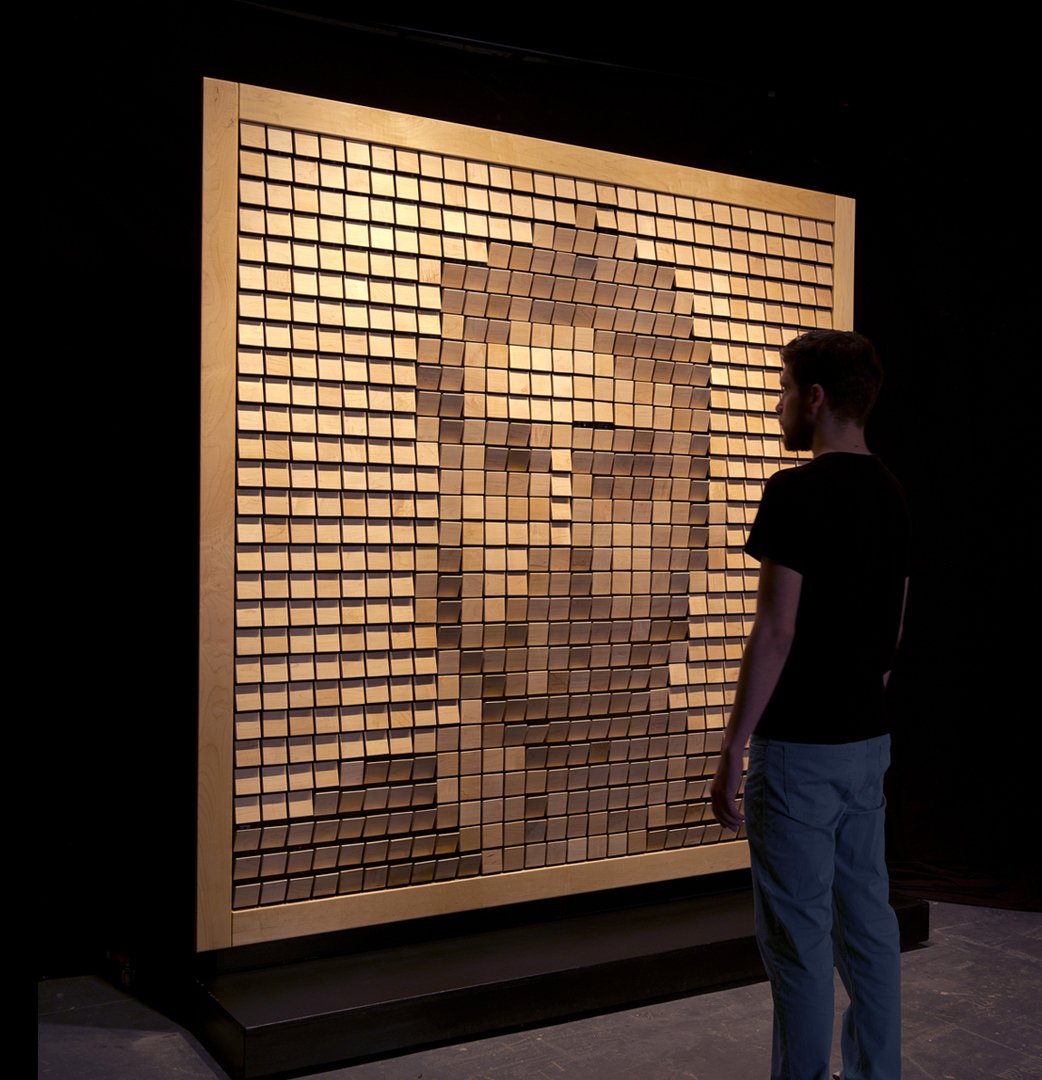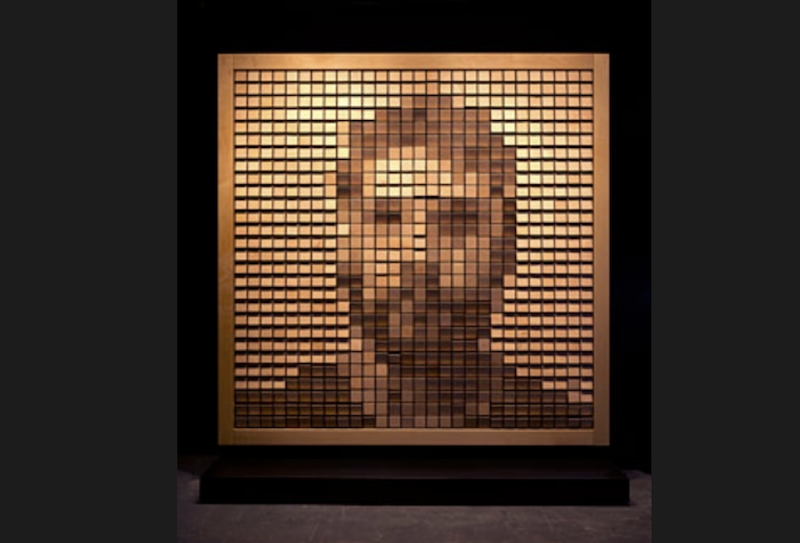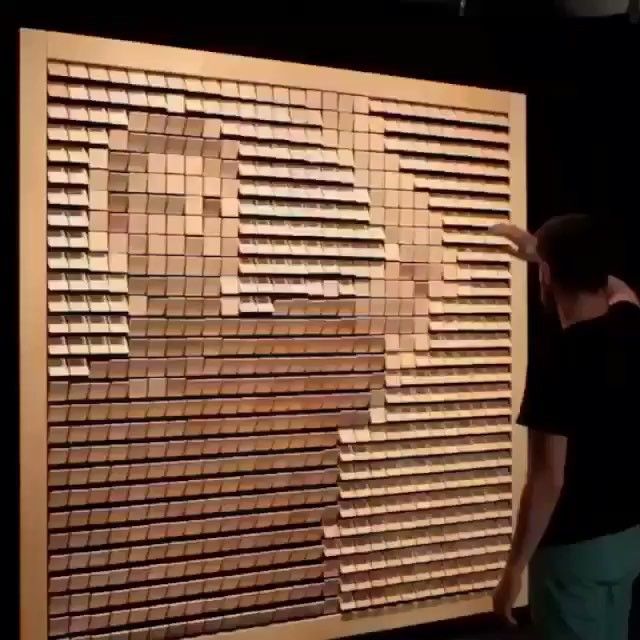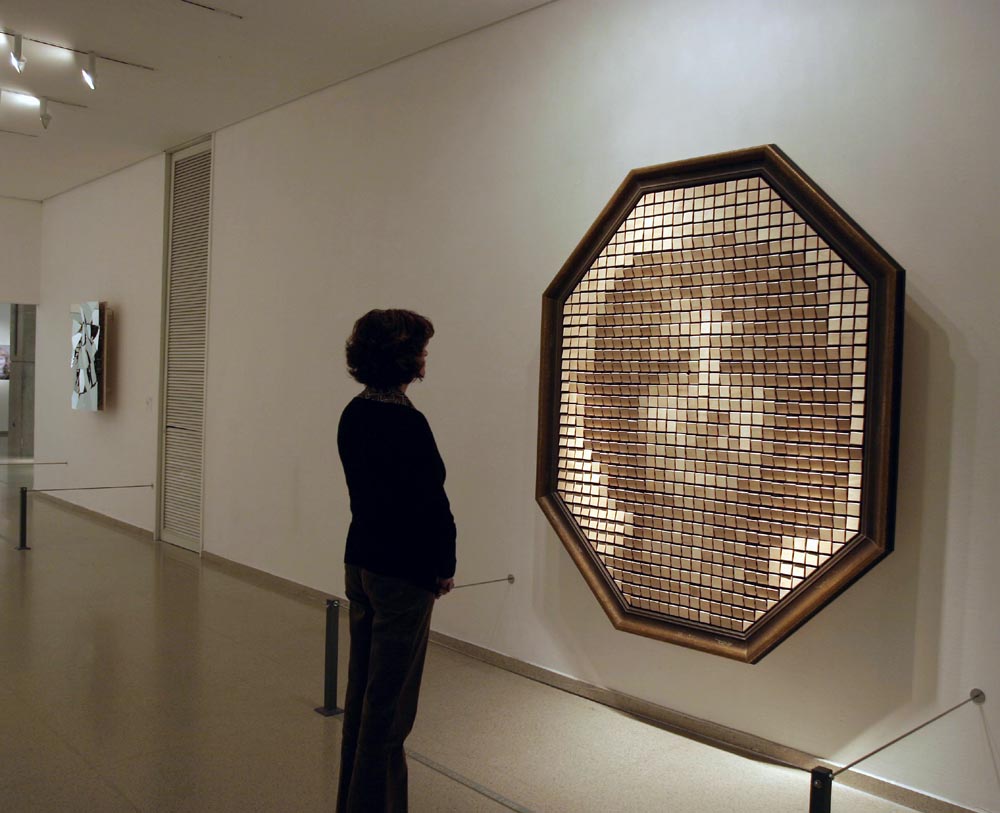Magic Mechanical Wooden Mirror

This wonderful mechanical wooden mirror looks deceptively simple. In reality, it is technologically complex – the hundreds of blocks in the matrix respond to input from carefully concealed cameras that tell them when to shift and rotate. Subtle shades emerge out of the combination of reflected light, cast shadows and the soft wood grain.
Changing with its environment in real time, this mirror is an animated and ghostly reflection of whatever is put in front of it. We see small bits and pieces of ourselves reflected in all kinds of accidental mirrors all the time – opaque images shop windows, distorted forms in a curved metal hand rail – but this takes a particularly unusual material, not known for its reflectivity, and makes it into a larger-than-live reflector.
In the video, you can see just how fast the mirror responds to what the camera sees – and below you can see its creator reflected in his unique innovation.
“The 4 mechanical mirrors are made of various materials but share the same behavior and interaction; any person standing in front of one of these pieces is instantly reflected on its surface,” explains Rozin. “The mechanical mirrors all have video cameras, motors and computers on board and produce a soothing sound as the viewer interacts with them.”
The other mechanical mirrors include “Rust” and “Weave,” the latter of which gives us a peek into the hidden workings behind these deceptively simple looking creations.
“Daniel Rozin is an artist, educator and developer, working in the area of interactive digital art,” reads his artist statement. “As an interactive artist Rozin creates installations and sculptures that have the unique ability to change and respond to the presence and point of view of the viewer. In many cases the viewer becomes the contents of the piece and in others the viewer is invited to take an active role in the creation of the piece. Even though computers are often used in Rozin’s work, they are seldom visible.”









